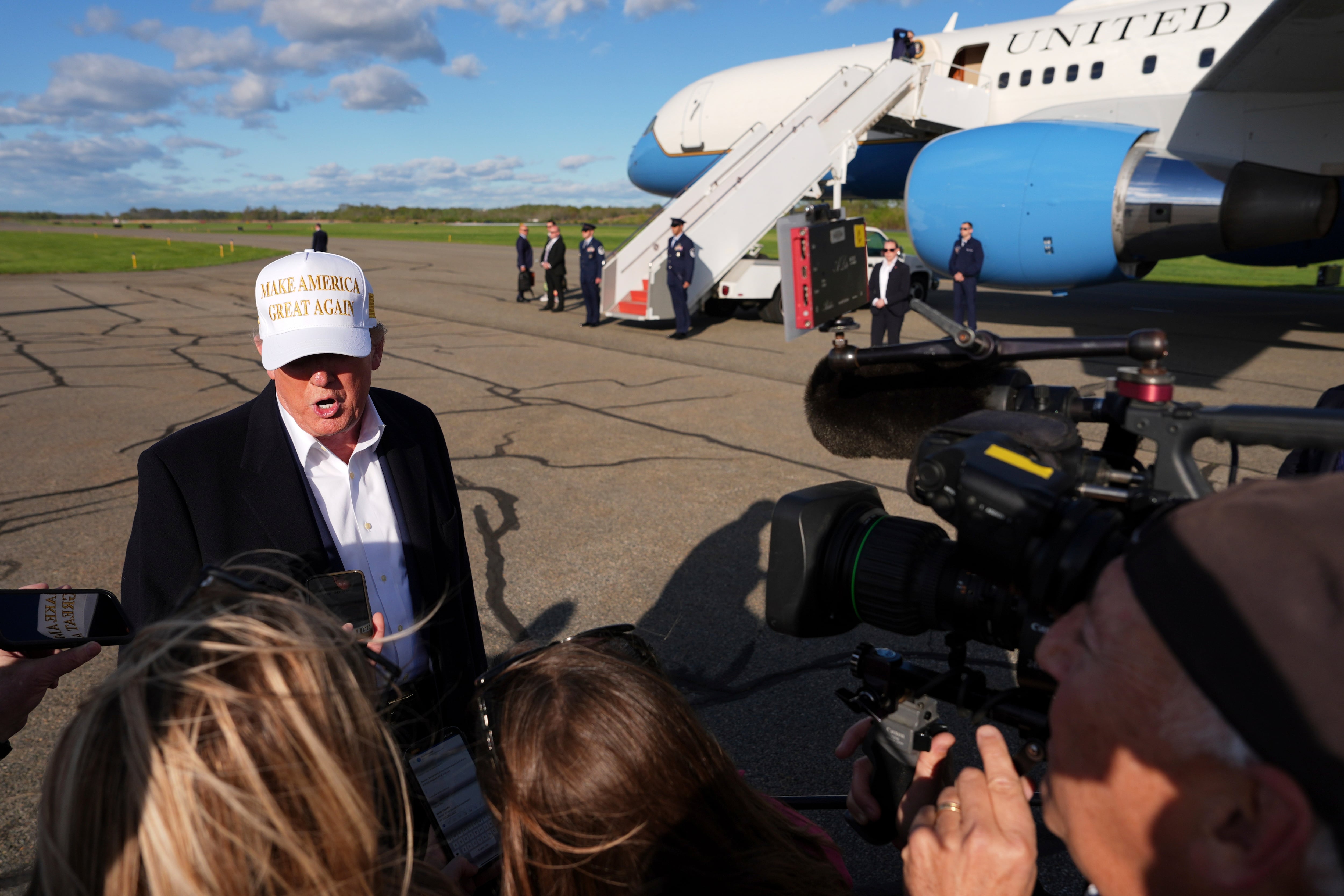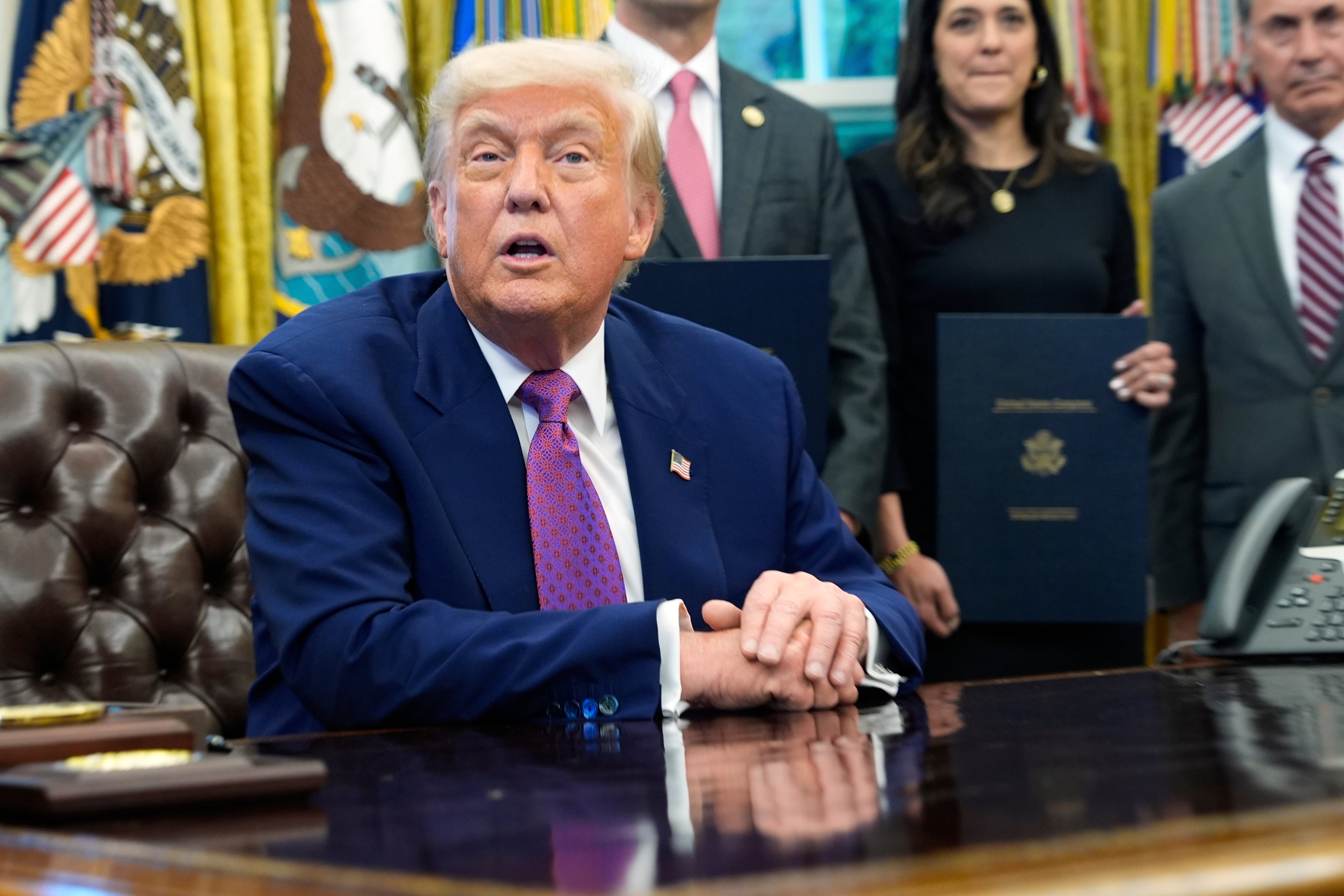Mechanics from Boeing contaminated the oxygen system on a presidential Air Force One aircraft last April, according to an accident investigation board report released Tuesday.
The contamination to the VC-25A — one of two planes that is known as Air Force One when it carries the president — required $4 million in repairs, which Boeing paid for, the March 6 report said. Had it not been corrected, such contamination could have increased the risk of a fire.
The report said that three Boeing mechanics at a plant in Port San Antonio, Texas, used a contaminated regulator and contaminated tools, parts and components while checking the oxygen system for leaks during regular depot maintenance between April 1 and 10, 2016. They also used an unauthorized cleaning procedure while unsuccessfully trying to sanitize the parts, the report said.
To avoid the chances of a fire breaking out, only "oxygen-clean" tools and components — items that have been cleaned in a specific way to remove any residue that could react when coming into contact with oxygen — can be used on the plane's oxygen system, according to the report.
Once components are oxygen-cleaned, they can only be exposed to the air for a short amount of time — as little as two to five minutes —,before they must be cleaned again and sealed in a protective package, the report states.
One mechanic gave another mechanic tools and parts to work on the plane, and said they were oxygen-clean. But the second mechanic later learned many of those tools and parts hadn't been properly cleaned and had been exposed to the air too long.
At one point, the report said, the first mechanic gave the second some cleaning solution and said, "Here [is] some cleaning fluid. Do with it what you want. Use it if you want, but I don't know anything about it."
The report said the solution could have been used to clean those tools and parts, but none of the three mechanics were trained or authorized in the proper techniques. Two mechanics then cleaned parts in the wrong way, and connected the passenger oxygen system and the medical oxygen system together with the contaminated parts.
The report said the Boeing depot had fallen behind schedule and wasn't providing enough oversight over its operations. To try to catch up, the depot's maintainers — including the three maintainers who worked on Air Force One — had been put on mandatory 12-hour shifts beginning in December 2015. The three maintainers were working six to seven days a week — sometimes working without a day off for weeks at a time.
Boeing's quality assurance also failed to verify the mechanics were conducting the repairs in the correct way but signed off nevertheless.
All three maintainers had been trained on oxygen cleanliness, the report said, but their actions showed they either did not absorb or retain the information. Three weeks before the mishap, one mechanic went through a training course that emphasized this matter, but the report said this mechanic did not remember taking the recertification training, and the mechanic "failed to observe explicit warnings concerning cleanliness."
Investigators also expressed their concerns about a lack of experience at Boeing's San Antonio depot. In 2012, Boeing decided to move its heavy maintenance operation for Air Force One from Wichita, Kansas, to San Antonio, but this move meant 172 Boeing personnel wouldn't meet the required five-year experience requirement. Boeing requested waivers for those 172 employees in February 2015 — including two of the mechanics involved in the oxygen system contamination — and self-assessed those employees' relative inexperience would be a low risk.
Boeing spokesman Ben Davis said in a Wednesday interview that the company supported the investigation, and that the report accurately described what happened.
"We took swift action to self-report the incident to the Air Force, and we remediated the oxygen system at no cost to the government," Davis said. "We fully understand the level of responsibility that comes from working on the president's aircraft, and we're committed to our partnership with the Air Force to provide the highest standard of support for the VC-25."
Stephen Losey is the air warfare reporter for Defense News. He previously covered leadership and personnel issues at Air Force Times, and the Pentagon, special operations and air warfare at Military.com. He has traveled to the Middle East to cover U.S. Air Force operations.





